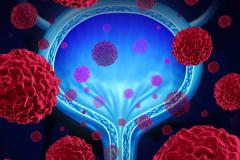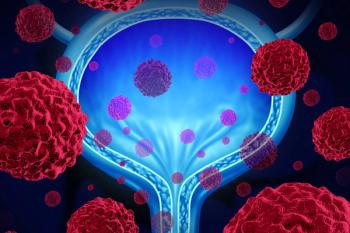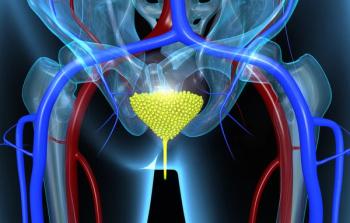
Role of Chemoradiation in Node-Positive Bladder Cancer
Key opinion leaders in bladder cancer consider the evolving role of chemoradiation in patients with node-positive disease.
Episodes in this series

Transcript:
Petros Grivas, MD, PhD: Emily, you and I are staffing the tumor board frequently. Sometimes we have patients with node-positive disease. Can you walk us through some of those discussions we have? This case is a little advanced with N3 and N2, but it can be other cases with N1 or N0. What things come to mind for a node-positive patient? [What are] the treatment options and your thoughts about induction chemotherapy, for example, and incorporation of radiation at some point?
Emily S. Weg, MD: Yes, these node-positive patients are always a discussion. The treatment plan is never obvious. There’s obviously a lot more clarity for treating node-negative localized bladder cancer patients. For node-positive, there are data available, but we need more, especially for bladder preservation. The standard approach for node-positive bladder cancer is to start with induction chemotherapy. There’s an expanding role, though, for bladder preservation or chemoradiation to the bladder for node-positive patients. In the most recent NCCN [National Comprehensive Cancer Network] Guidelines for bladder cancer for N1, N2, and N3, chemoradiation is a category 1 option for patients, which it hadn’t been in the past. We’re starting to see more of these patients and definitely thinking of using chemoradiation as more of a viable option than we’ve considered in the past. We also have ECOG-ACRIN EA8185, which is a really important study. We need more studies in the space of node-positive disease, especially for chemoradiation, and that’s a particularly exciting one.
Petros Grivas, MD, PhD: Absolutely, Emily. I agree. For the concern of node-positive disease, we have this discussion with the patient about node metastases and the risk of micrometastases, which is very high. We tend to start with induction chemotherapy first. Chemoradiation is a great discussion with the patient. The question is timing. Do we do it as a consolidative approach after induction chemotherapy, trying to control disease systemically? It’s a case-by-case discussion with the patient. You mentioned the very important ECOG-ACRIN EA8185, the INSPIRE trial by Dr [Monika] Joshi. Could you give us a brief outline of that study?
Emily S. Weg, MD: Absolutely. These are for patients with node-positive disease. They can have N1, N2, or N3, and there are 2 randomizations in the study. The first one is randomizing patients to chemoradiation alone or chemoradiation with durvalumab. There’s also stratification. Patients are prestratified based on whether they’ve had induction chemotherapy. I don’t believe it’s required, but you could have had induction chemotherapy, and then you get randomized to chemoradiation alone or chemoradiation with durvalumab. The second randomization is post-treatment. You can be randomized to observation or maintenance durvalumab. There’s a similar trial open in the node-negative space, SWOG S1806, but it’s a combinatorial strategy of using chemoradiation with or without atezolizumab. Obviously, it’s a very active space trying to combine chemotherapy and radiation, which can be immunogenic with immune checkpoint inhibitors, and a very active area of investigation. Across all these new sites, there’s a lot going on for bladder cancer.
Petros Grivas, MD, PhD: I totally agree. It’s fascinating how much is going on in that field and how much we try to improve outcomes, to your point about a potential combination of checkpoint inhibitors. As you mentioned, there are 2 clinical trials in phase 3 for node-negative muscle-invasive disease. One we have open and have patients on, the SWOG/NRG S1806 chemotherapy radiation plus or minus atezolizumab. There’s a similar trial, the KEYNOTE-992 with chemoradiation plus or minus pembrolizumab. In both cases, after maximum TURBT [trans urethral resection of bladder tumor]. We try to answer that question: does it add value to add a checkpoint inhibitor in the backbone of chemoradiation to achieve more bladder preservation and better outcomes? That’s a great question being asked. We have these 2 phase 3 trials in node-negative disease and the INSPIRE EA8185 trial in node-positive disease. It will be very interesting to see what the future holds. We also have patients enrolled in the SWOG/NRG S1806 trial, and it’s exciting to see them go through the treatment.
Transcript edited for clarity.
Newsletter
Stay up to date on recent advances in the multidisciplinary approach to cancer.





















































































